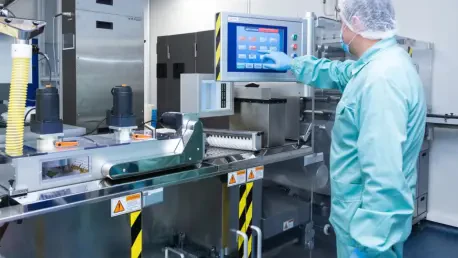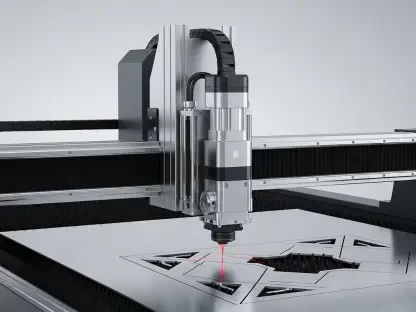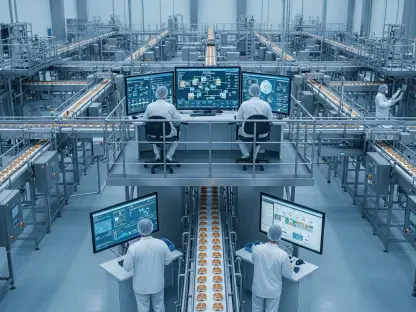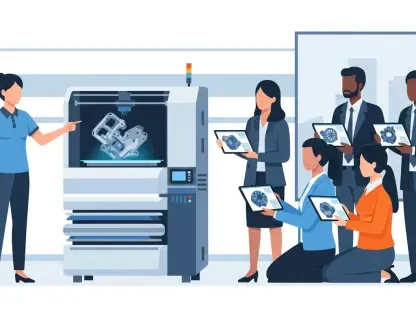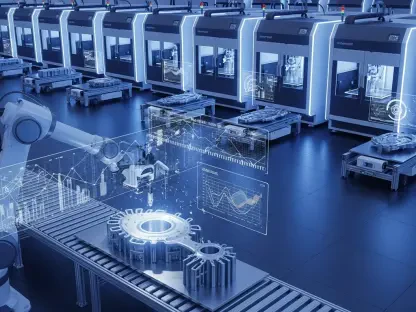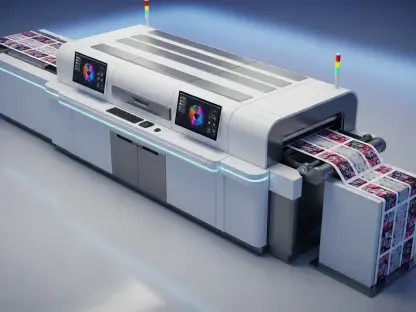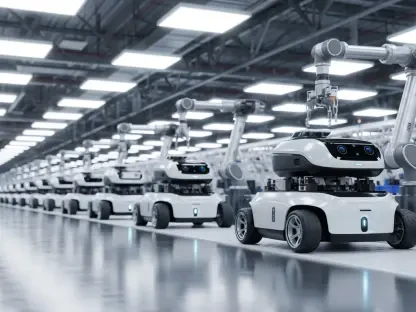In the fast-paced world of pharmaceutical production, speed and efficiency are crucial. The accelerated development of pharma manufacturing epitomizes a pivotal shift in technology that addresses this critical need. In an industry where producing and delivering life-saving medications efficiently is paramount, the integration of cutting-edge technology has become indispensable. Eli Lilly’s state-of-the-art manufacturing facility in Concord, North Carolina, stands as a remarkable testimony to this advancement. Constructed with impressive speed akin to NASCAR’s fast-paced ethos, the facility was initiated in the previous three years and is already operational, highlighting a significant breakthrough in manufacturing timelines.
A Closer Look at Eli Lilly’s Technological Strategy
Eli Lilly’s new facility is a paradigm of the emerging trends in pharmaceutical manufacturing. Its rapid construction timeline sets a new benchmark, underscoring the company’s ability to rapidly scale production to meet increasing demands for their pharmaceutical products. The firm’s investment of $1 billion into the facility, later increased to $2 billion due to market pressures, illustrates a commitment to addressing market demands, especially for their diabetes and obesity medications. This strategic move not only met current requirements but also ensured readiness for future growth avenues.
Advanced Technology Driving Efficiency
The Concord facility integrates state-of-the-art technologies, including automation and robotics, enhancing manufacturing efficiency and output. The design of the facility, incorporating two primary buildings for manufacturing parenteral products and device assembly, leverages advanced technological components to optimize operations. This setup is emblematic of a broader industry shift toward integrating high-tech solutions for enhanced manufacturing capacities and streamlined operations.
Embracing Innovation and Sustainability
The site’s design, extending over an expansive area with only 20% utilized for development due to environmental considerations, reflects a commitment to sustainable practices. By preserving the majority of the land, which includes vital wetlands, Eli Lilly demonstrates how corporate responsibility can coexist with industrial innovation. This aligns with a growing trend of balancing environmental stewardship with business objectives in the pharmaceutical sector.
Real-world Impact and Strategic Importance
Eli Lilly’s strategic choice of establishing the facility in North Carolina capitalizes on the state’s robust bioscience ecosystem, offering access to skilled labor and proximity to leading research centers. This positioning strengthens North Carolina’s emerging role as a biopharmaceutical hub. The creation of over 750 jobs further emphasizes the economic and strategic value of such investments, reinforcing the state’s reputation as a growing center for industrial innovation within the pharmaceutical industry.
Obstacles and Industry-wide Challenges
Despite these achievements, the facility’s rapid construction and operational ramp-up weren’t without challenges. Eli Lilly encountered regulatory hurdles, highlighting ongoing issues faced by manufacturers in the United States. CEO Dave Ricks advocated for streamlining regulatory processes, reflecting a common industry sentiment for easing the regulatory burden to facilitate faster project approvals. These challenges underscore the need for policy adaptability to maintain competitive-edge advancements in pharmaceutical manufacturing.
A Vision for Continued Innovation
Looking forward, Eli Lilly’s plans to invest $27 billion in new U.S. manufacturing facilities signify a sustained commitment to advancing pharmaceutical production capabilities. By focusing on active pharmaceutical ingredients and injectable products, the company aims to consolidate its manufacturing prowess. This vision aligns with broader industry goals to enhance supply chain resilience and address market fluctuations more efficiently.
In conclusion, Eli Lilly’s endeavors in accelerated pharma manufacturing mark a significant evolution in how pharmaceutical companies address critical demands and technology-driven solutions. The Concord facility stands as a testament to Eli Lilly’s visionary approach, setting a precedent for future developments. This progress showcases a shift toward agility in pharmaceutical production, opening new horizons for innovation and industry growth while highlighting the need for ongoing regulatory modernization to keep pace with technological advancements.
